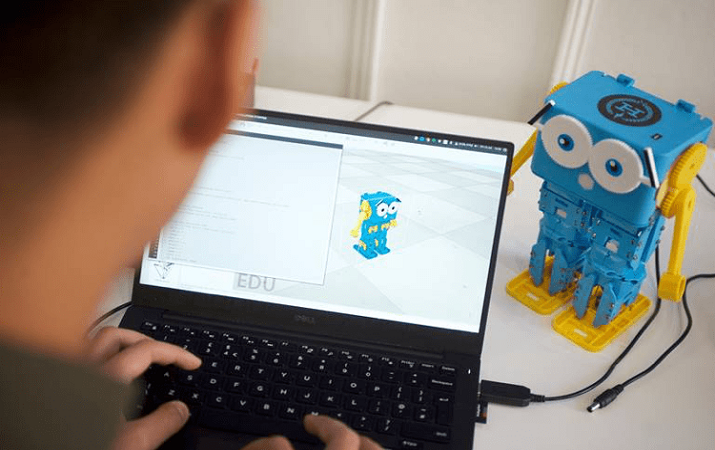When tech companies sell their IT solution products for teaching and learning, these are common opening statements of all companies. Some of them sometimes start with asking “how do you learn before?” or “are your students happy when you lecture?” With my years of experience in one of the biggest universities in Manila, I always get a request to listen to these kinds of presentations from companies ranging from telecommunications to book publishers to famous IT brands. These companies are obviously making a conscious effort to rationalize their products to the concepts of teaching, learning and education by using educational terms which themselves they do not fully understand. As an EdTech decision maker, it is important to see how these products will be able to address teaching and learning challenges in the classroom and should be able to see evidence that the product can live to its promise of innovation.
Rationalizing Tech Solutions in Education
How should these technology products be rationalized in the context of education? In fact, a more relevant question is how IT investments can show effects in the teaching and learning effectiveness of students in an academic institution. This question must be answered empirically.
In answering to this question, we should be able to understand the concepts of innovation in education and learning effectiveness. Any progressive academic institution in the world realizes, in a variety of reasons, the need to integrate technology into their curriculum, instruction and physical classroom. Generally, the reason for this innovation is to improve the quality of education and instructional experiences of the students. These technological innovations are mostly evolving in the acquisition of computers, internet access, gadgets and related peripherals, learning software, physical collaborative learning spaces and a structured learning management system, which can be used for a variety of reasons such as for open online courses, the efficiency of teaching and learning and self-paced learning.
Learning effectiveness, on the other hand, may be associated with increases in performance, motivation and engagement, and the ability of students to be responsible for their learning. Learning effectiveness is a result of the process, not the process itself. As a process, it could benefit from technology development. It is also widely assumed that digitization leads to improvements in learning and ultimately, learning effectiveness.
Innovation for Change or Innovation to Change
In an article written by Will Richardson entitled, “Stop Innovating Schools. Please.” he identified “innovation” today as a guise of vendors selling gadgets or code. He further questioned if this “innovation” really changes us? This article will also attempt to shed light on this as the previous question above can be linked to the question raised by Richardson.
When we talk about technological innovations, we talk about investment. However, an increase of investment costs in technology may not necessarily increase in learning effectiveness, or the absence of investments does not necessarily impede learning from transpiring. Although the initial thought of any investor is if the technology is acquired precisely for improving learning, it is deemed necessary to determine whether indeed it supports learning, if not, we can only conclude that the investment is not well spent. Of course, technology upgrades are not inexpensive. In fact, over the last few years, many tech companies are earning billion of dollars from school patrons from both developed and developing countries.
These educational tech companies can take the opportunity of the 46 percent active Internet users and 51 percent unique mobile users in the world. Likewise, in May 2013 The Harris Poll survey of teachers across the United States, 92 percent of them would like to use more EdTech tools in their classrooms than they already do. However, only about 14 percent of them are actually integrating technology into their curriculum. This is a common scenario in which there can be heavy investment in technology but little integration done.
Technology that can direct a change
A Learning and Technology Framework (LTF) can be used to define the effectiveness of a particular technology in student learning. In an acquisition of a technology, its performance should be measured through a Technology Performance Questionnaire (TPQ) and can be gauged through the framework to check if the technology has the ability to direct a change. Change in the direction in the LTF may yield to four desirable and undesirable outcomes. The four outcomes can engage the students and affect learning effectiveness regardless if the technology has low or high performance. In this case, it can be described that a technology, whether it has low performance, it can still affect change in learning, thus, may mean less investment cost. If the gauge shows high performance that affects high engagement in learning, then, the investment is successful, however, may mean high costing. The fifth outcome, which is the least, is the technology has high performance but learning remains low and passive. This is obviously the area where investors see the investments as counterproductive. If technology is not used to enhance engaged learning, there is no reason to pay for higher cost of greater functionality.
Education Technology Companies and Learning Effectiveness
The outcomes may sound given. However, in dealing with education technology companies, this is the area where they should be focusing in terms of finding ways to innovate. If these companies can show evidence that the innovation being offered will yield to high engagement of students and high learning effectiveness, the “innovation” as depicted in Richardson’s article can really provide the sense of the word innovation. I believe that innovation in education technology must not only be in terms of why it is different from the rest, but it must be inherent to the nature of learning. At the end of the day, the reason for all these technological innovations be it in the curriculum, instruction or physical learning spaces must be directly related on how learning can be effectively utilized by students, no one else.
Courtesy: HIGHER EDUCATION Review
Follow us on Facebook, Twitter, LinkedIn.








